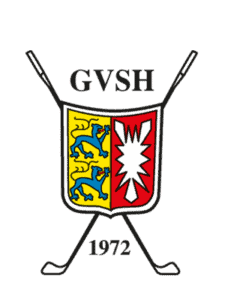Two people, one goal: Olaf Gühring and Dagmar Blacha want to increase biodiversity on a golf course in Upper Bavaria. The Bergkramerhof, as the golf course in the south of Munich is called, belongs to the Gühring family. Dagmar Blacha works as an expert for the State Association for the Protection of Birds on golf courses to develop projects with those responsible there to ensure greater biodiversity across the entire area. The project in which Gühring and Blacha are jointly active is the Bavarian Flowering Pact, which the Bavarian Golf Association and the Bavarian Ministry of the Environment concluded in 2020 and extended in 2023.
The two are united by their goal and their commitment, but their starting points are completely different, as you can quickly see on this day. For Blacha, the nature conservation expert, the compensatory areas on the slightly hilly site, which covers around 80 hectares, are of particular interest. There are hedges and wooded areas, small bodies of water, orchards and pure meadows.
For Gühring, all of this is first and foremost a backdrop. Pure golf operations take place on fairways, tees and greens, and their maintenance determines the daily routine of the greenkeepers. For Blacha, this is short-mown grass with few species. Uninteresting – at least at first glance.
INSERT_STEADY_NEWSLETTER_SIGNUP_HERE
Over the next four hours, the view of these play areas will change. “We maintain them completely without pesticides,” explains Gühring. “Is that even possible?” is the astonished question from Blacha, who has already made numerous visits to other golf courses. She knows about the low use of pesticides on Bavarian golf courses, but until now she thought it was impossible to do without them completely. “It’s more time-consuming and more expensive, but it works,” Gühring explains, pointing to his excellently maintained fairways. Dealing with fungal diseases on the greens, for example, requires a great deal of expertise and, above all, a quick start to treatment.
Climate change with humidity and higher temperatures is a challenge for the golf course operator, but also for his counterpart from the Landesbund für Vogelschutz. “This year, nature was almost three weeks earlier and we generally have more invasive species to contend with,” says Blacha.
Whether hogweed, ragwort or balsam – their presence leads to the displacement of native species. Looking at the large meadow areas of the Bergrkamerhof, however, Blacha first of all notes that the population looks good. The mowing, which a farmer only carries out here twice a year in accordance with regulations, is appropriate. The fact that a large part of the meadow areas at Bergkramerhof are designated as a biotope and therefore may not be entered is also positive from a nature conservation perspective. “But the golfer keeps trying,” explains Gühring with a laugh. “You just don’t like to lose a ball.”
The fine art of meadow maintenance, as Gühring learns from his counterpart this morning, is made up of several steps. “The more small-scale the maintenance, the better,” is Blacha’s motto. “It is important that you never mow everything at once, but always leave areas where insects and small creatures can colonize in the event of mowing. In winter, it is essential to leave unmown areas, ideally 20 percent.” For the mowing itself, she recommends a bar mower.
Sale of hay to horse farm
The GC Bergkramerhof processes the grass cuttings from the meadows into horse hay. “Due to the fact that we maintain the golf course without pesticides, it is very popular,” summarizes Gühring. Over 200 bales of hay are produced each year, which can be sold to a horse farm. An exceptional case, as Blacha knows. Many golf courses are urgently looking for buyers for the hay.
The LBV expert takes a critical look at the greening of the various water areas. The verdict is positive: she discovers several Iris sibirica, which are on the Red List of endangered species, at the very first pond. A positive finding for the owner of the golf course. Yes, the plants were eye-catching because of their striking flowers, but he was not aware that they were a rarity.
The day together is characterized by learning together. Dagmar Blacha takes away a little more knowledge about the operation of golf courses from every golf course visit. “In the meantime,” she sums up, “I also know that many golf clubs are anything but well equipped when it comes to finances.” The image of the wealthy golf club has faded over time. “We want to do something for nature, because sustainability is the guiding principle of our entire golf course operation,” says Gühring. “But very few golfers become members here for that reason, they want to play golf first.”
It is therefore a question of finding compromises that do not impair the game of golf, but at the same time enhance nature. At the end of her visit, Blacha notes that she would still like to have a raw soil area, for example, and explains why this is so attractive for wild bees: “We don’t have to worry about honey bees, but we do have to worry about wild bees.” Gühring already has an area in mind. It has to be sunny, not in play for the golfers. A par-3 hole on the 18-hole course lends itself to this because its slope is ideally aligned. “What we can do, we try to do,” says Gühring. “That’s why we’re part of the Blühpakt.”








 Photo: Four Seasons Hotel
Photo: Four Seasons Hotel